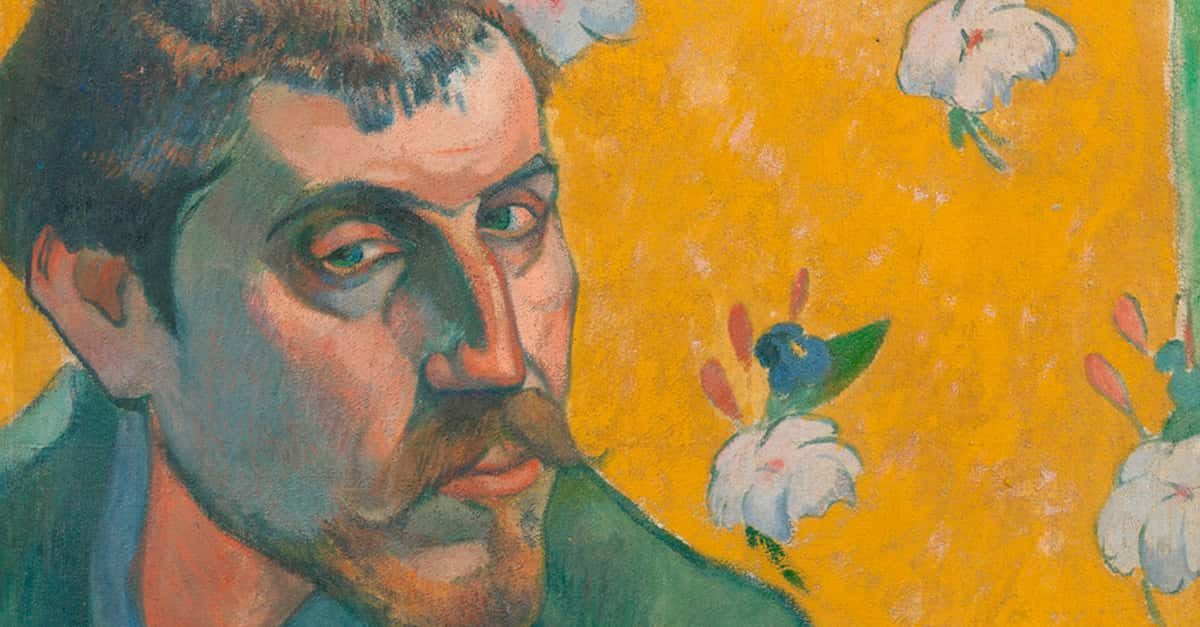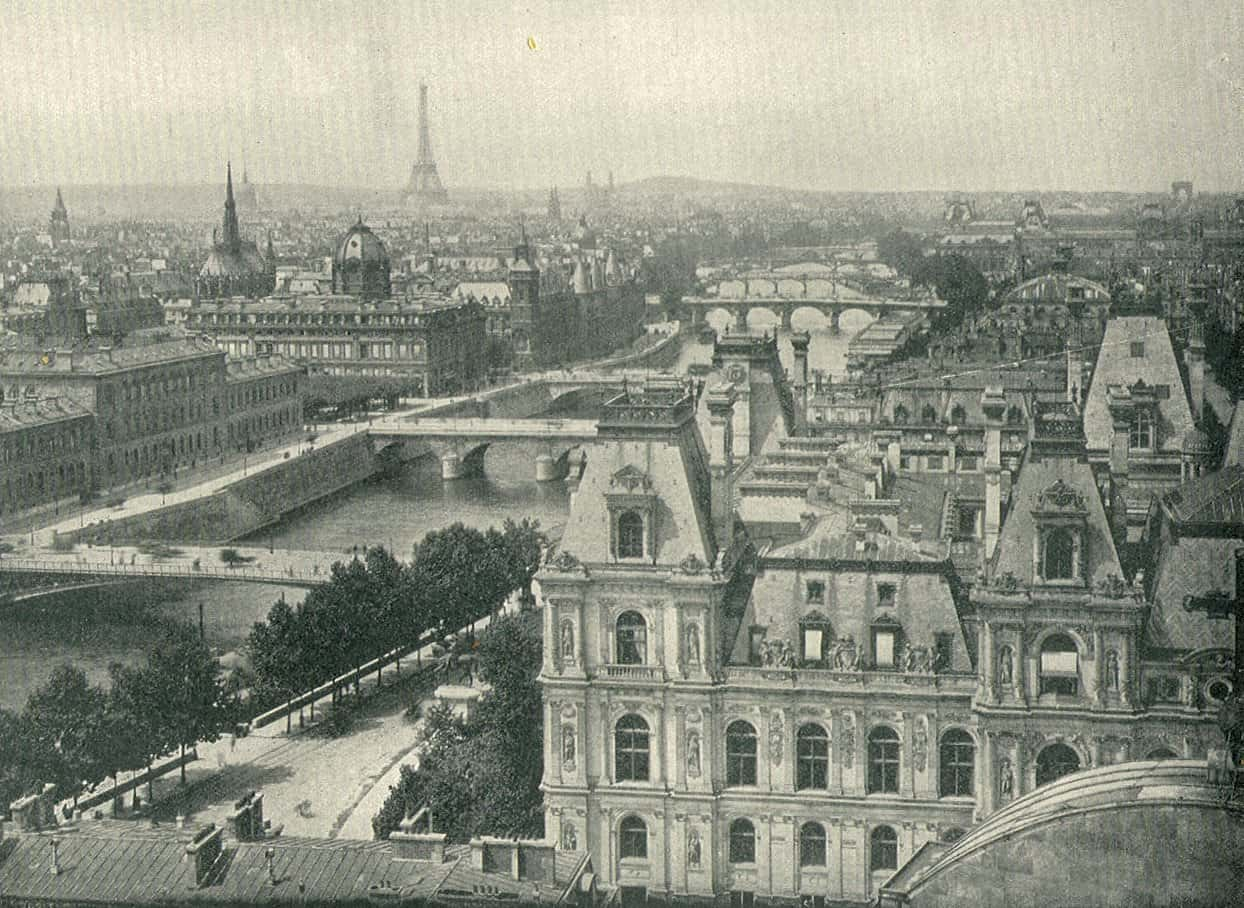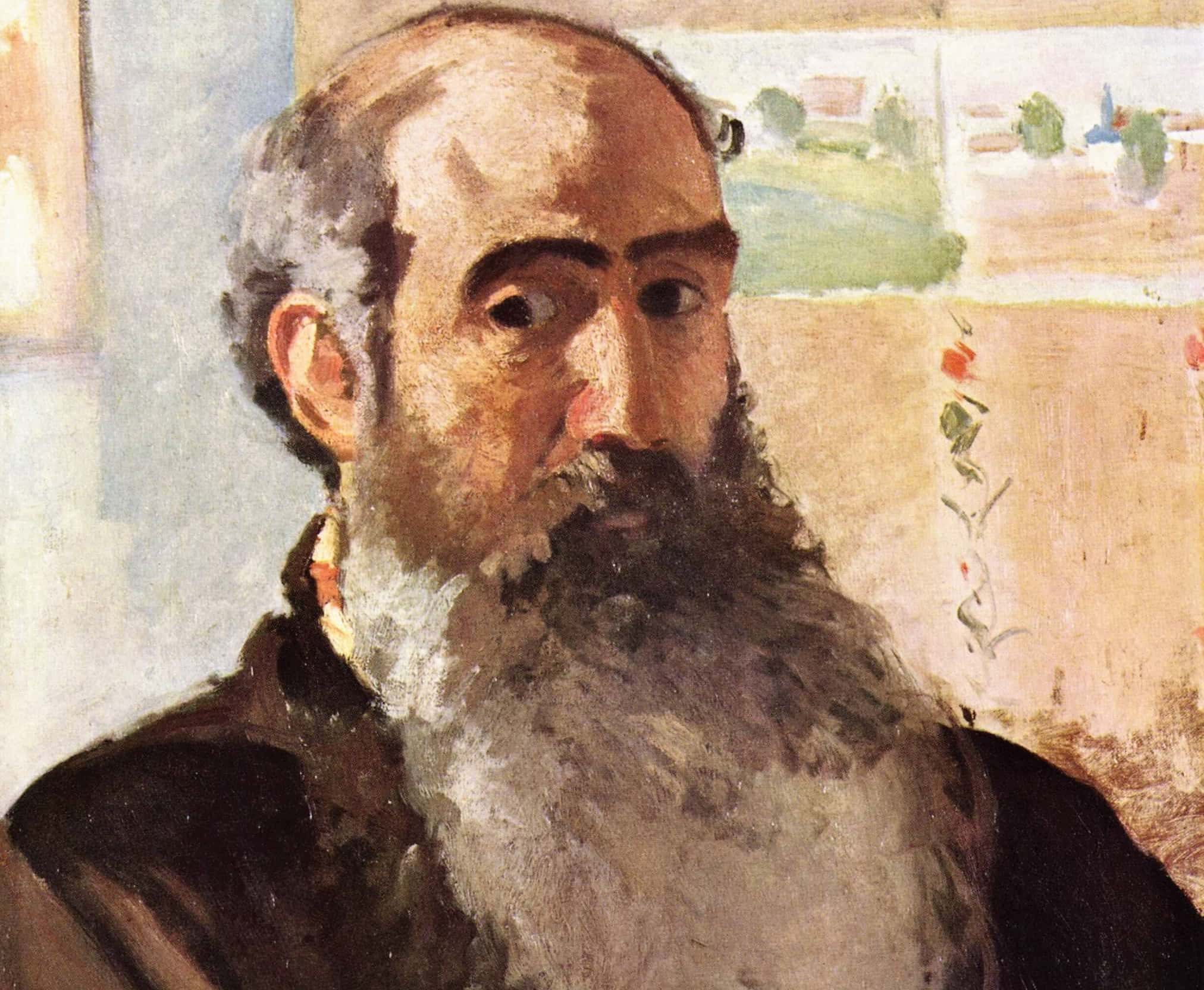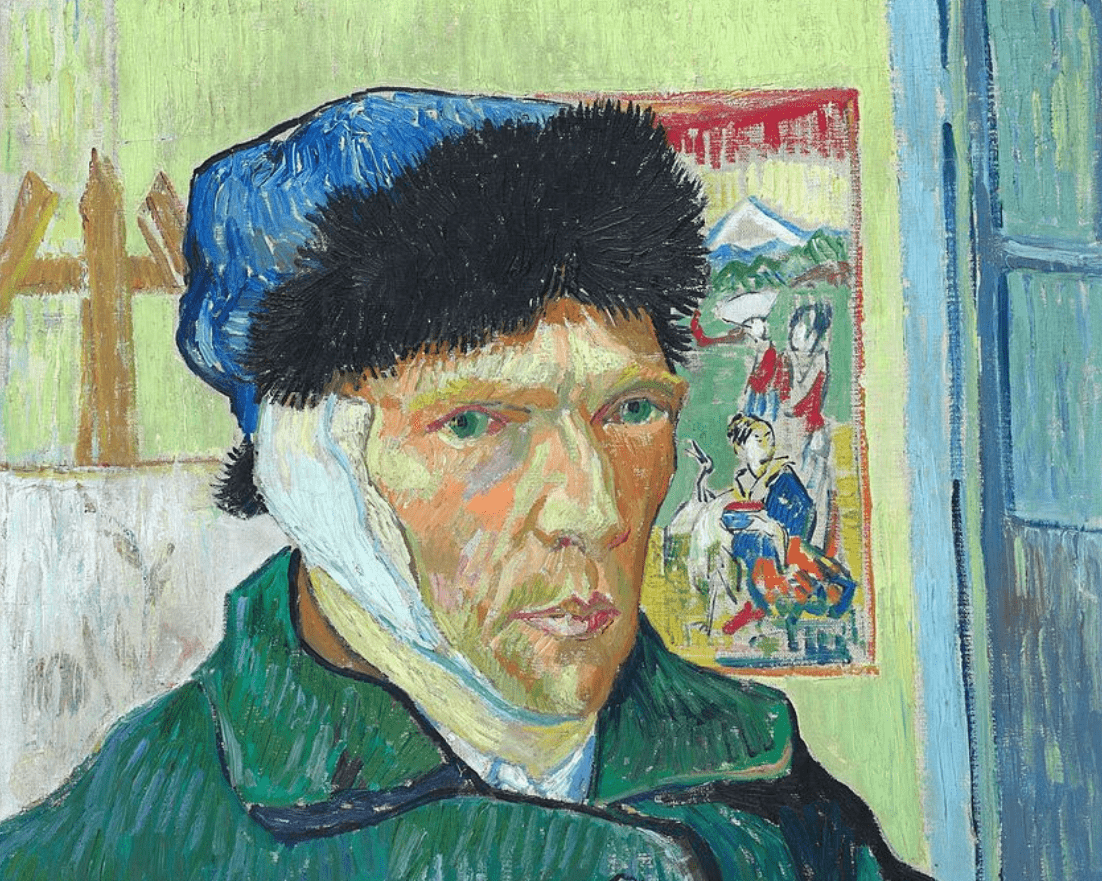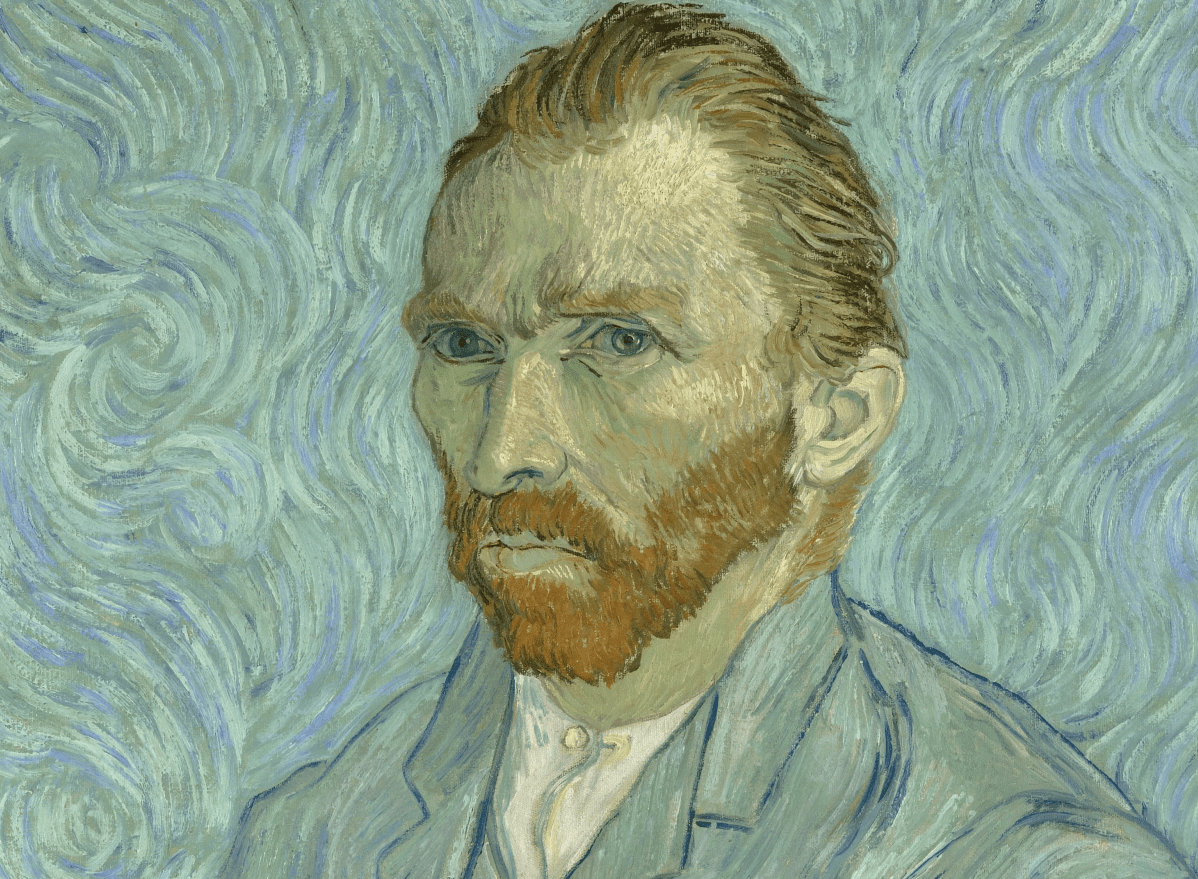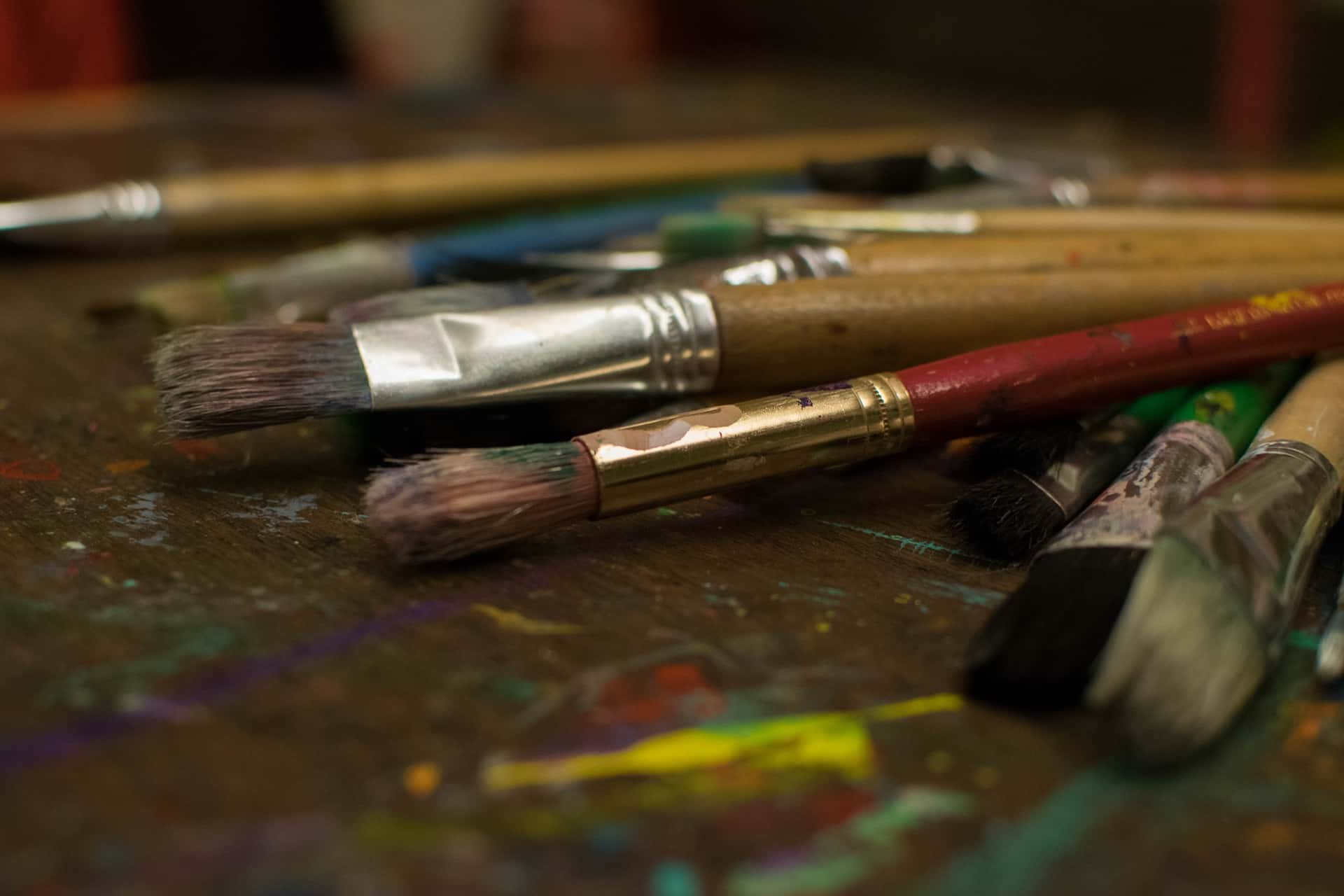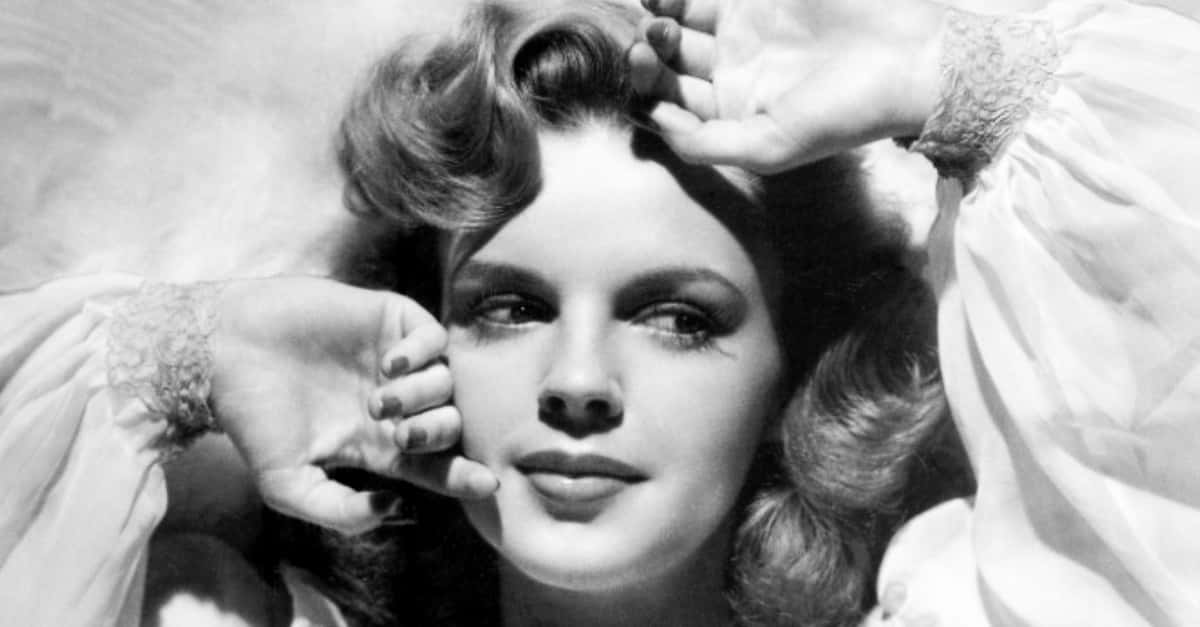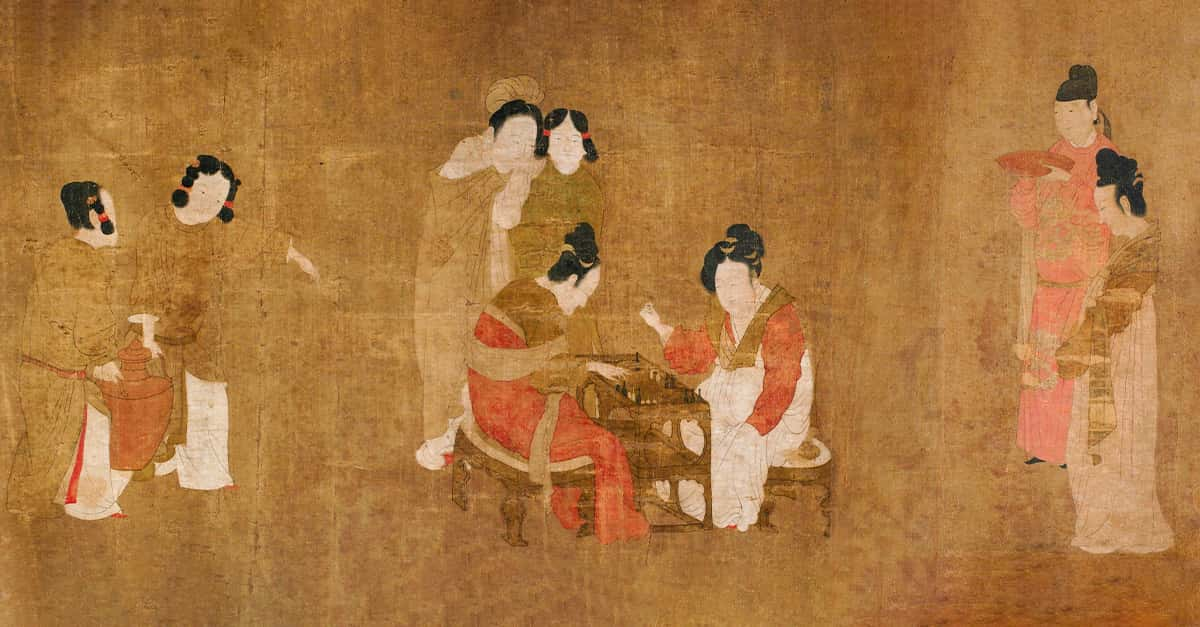Paul Gauguin is often known as the traveling French artist who loved to paint French Polynesian women in bold colors. That’s cool. But lesser known is Gauguin’s complicated family life, his predatory relationship with certain teenage girls, and his odd approach to self-diagnose some very suspicious skin rashes. Read on for the whole story behind these facts, plus the dirty details of his hot-and-cold relationship with a little-known painter named Vincent van Gogh, and a certain incident involving an ear.
1. Child of the Revolution
Paul Gauguin was born on June 7, 1848, to an unconventional family. His father, Clovis Gauguin, was a liberal journalist, his grandfather had been put behind bars for attacking his grandmother, and his grandmother had been a powerhouse combination of travel author and socialist activist. Making a family history tree must have been weird, to say the least.
2. A Literary Talent
Any talent that Gauguin had was clearly inherited from his incredible grandmother, Flora Tristan. Tristan was the illegitimate daughter of a Spanish aristocrat living in Peru. When Flora was all grown up and running away from her violent husband, she traveled back to Peru and wrote about her experience on the journey. This narrative shot to the top of all the “must-read” lists and Flora became an overnight literary sensation. Talk about #inspirational.
3. Socialist Firebrand
Gauguin never met rad granny Flora, since she passed away 44 years before he was born, fighting for the socialist cause and kicking it to the French authorities. But in a way, her presence was felt at his birth, since her activism helped pave the way for the Revolutions of 1848. Throughout the rest of Gauguin’s life, he turned her story into legend, keeping her books with him as he traveled the world.
It’s just too bad that he didn’t treat the living women in his life as well as he did the dead ones (but more on that later!).
4. On the Run
When Clovis Gauguin was run out of France following a conflict with the French authorities, the whole family—Clovis, along with his wife Aline, daughter Marie, and son Paul Gauguin—set sail for Peru to live off their wealthy South American relatives. But tragedy struck before they reached safe shores. Clovis Gauguin succumbed to a heart attack while the ship was still at sea. It’s fair to say that, at this point, the Gauguin family desperately needed a win.
5. It’s a Wonderful Peruvian Life
After arriving in Peru, the remaining Gauguin family was welcomed by their extended relatives who were wealthy, connected, and affluent. How connected? One relative became the President of Peru. For the first six years of his life, young Paul Gauguin lived a pampered life of luxury, waited on by servants and nursemaids. Unfortunately, this charmed life would soon come to an abrupt end.
6. Moving Back to France
The crash happened fast, when Gauguin’s relatives fell from power during Peru’s civil turmoil in 1854. Home again, home again, jiggidy jig, the Gauguin family packed up and moved back France, where the family was split up. Aline Gauguin dropped Paul off to be raised in his grandfather’s home (luckily not the scary, wife-attacking one), while she continued on to work in Paris as a dressmaker. Are you getting whiplash from the sharp turns in this story yet?
7. The Navy Wants You, Sailor!
Moving across the Atlantic Ocean twice in his young life made a strong impression on Paul Gauguin. After attending several fancy boarding schools (apparently, his grandfather was loaded), Gauguin enrolled in a naval preparatory school at 14 years of age. After completing his final year, he became a pilot’s assistant with the merchant marines, and then joined the French navy, in which he served for two years.
8. If Only We Had Emailed
While romping in the French navy, colonizing the high seas, Gauguin was out of communication reach. It’s hard to imagine in today’s age of instant messaging, but it took several months for the news of his mother’s passing to reach him. By the time the sad letter caught up with him in India, Aline had been long dead and buried. How’s that for a one-two punch?
9. He Works (Kinda) Hard for the Money
At the age of 23, Gauguin returned to Paris (a theme of his life) and gave up a life in the navy to become a stockbroker. Yes, you read that right: Gauguin was a successful stockbroker and businessman for 11 years, eventually making the equivalent of $145,000 per year in US currency. Oh, you thought this was going to be a story about the starving artist type? Well, given the nature of Gauguin’s volatile life, just give it a couple years...

History's most fascinating stories and darkest secrets, delivered to your inbox daily.
10. Domestic Bliss?
While still an up-and-coming Wall Street tycoon, Gauguin married a Danish woman, Mette-Sophie Gad. Within the next decade, the couple had five children (two of whom did not live past the age of 21). If Gauguin seems like a bit of a flake, Mette was the backbone of the family, often making the hard decisions and taking charge when the muck hit the air conditioner. She was his rock—but their relationship would eventually go up in flames.
11. Early Mid-Life Crisis
When the stock market in Paris crashed in 1882, Gauguin left his life as Wall Street sleaze and decided to devote his time to art instead. I warned you: Our boy Gauguin liked to make sharp 180-degree decisions. If you are counting significant career shifts for him so far, this makes #3.
12. Professional Amateur Enthusiast
To be fair, Gauguin had already been dabbling in art while still working as a stockbroker. However, what initially started out as a hobby soon became an overpowering obsession. While still raking in the cash as a stockbroker, Gauguin lived in an artsy neighborhood. In his spare time, he would visit nearby cafes full of Impressionist artists, attend art exhibits, and purchase art pieces by new and emerging artists.
 Paradise Found (2003), AMPCO Films
Paradise Found (2003), AMPCO Films
13. Room with a View
This growing obsession with art, painting in particular, inspired Gauguin’s move to a cheaper part of Paris so that he could live in a larger house, complete with an artist’s studio. In this new space, Gauguin began to get serious about his painting hobby. All of this early work was dismissed at the time, but critics have since re-evaluated it and several of these pieces are now considered to be great art. How’s that for beginner’s luck?
 Paradise Found (2003), AMPCO Films
Paradise Found (2003), AMPCO Films
14. Fanboy to Friend Status
This was an exciting time for Gauguin, as he was finally carving out a niche for himself in the art world, not to mention making friends with some heavy-hitter Impressionist painters. In fact, he even spent several summers painting with the likes of Camille Pissarro and Paul Cezanne. Baby boy painters grow up so quickly.
15. What Could Go Wrong?
After the stock market crashed, Gauguin’s work-to-paint life came crashing down. Since his stockbroker job could no longer support his artistic lifestyle, he decided to commit to art full-time. As part of this decision, Gauguin decided to move his entire family to Rouen—but it was far from a smooth transition.
 Paradise Found (2003), AMPCO Films
Paradise Found (2003), AMPCO Films
16. Trouble in Paradise
It doesn’t seem like Mette was consulted about this decision to move. All Gauguin cared about was that Rouen was cheap—allowing his large family to live on his greatly-reduced income—and provided greater access to his artist pals, especially Pissarro. Go where the painting is good, as the ancient proverb says. So, how did dragging his unwilling wife out to the sticks turn out for Paul? As you can imagine, not great...
 Paradise Found (2003), AMPCO Films
Paradise Found (2003), AMPCO Films
17. The Kids are Fine, It’s the Art I’m Worried About
Eventually, our girl Mette had enough of the artist’s life and rustic (ie, impoverished) country living. Taking matters into her own hands, she decided that the only way forward was to move the whole family back to her home in Denmark. Gauguin wasn't that excited about the idea, however, so she went ahead with their five children and settled in Copenhagen.
Gauguin followed sometime later, bringing his entire art collection with him. This delayed move was the first sign that the Gauguin family life was beginning to split apart at the seams.
18. Questionable Career Move
When Gauguin finally joined his wife and children in Denmark, he struggled to find work. Eventually, he became the world’s worst tarp salesman, in large part because he couldn't actually speak Danish. To make matters worse, after being on top of the world for so long, Gauguin struggled to create anything and felt bogged down by failure on all sides. It’s a fair bet that he would have also been a delight to live with.
 Paradise Found (2003), AMPCO Films
Paradise Found (2003), AMPCO Films
19. Real Bad Dad
By this time, Mette was the real breadwinner of the family, working as a French teacher and translator. After what must have been a lot of insufferable moping from Gauguin, Mette kicked him out of the house and sent him back to Paris. Oddly, he took only their middle son, six-year-old Clovis, with him. It seems like an unequal division of child custody, but then again, I’m no lawyer.
 Paradise Found (2003), AMPCO Films
Paradise Found (2003), AMPCO Films
20. Not a Family Man
Gauguin's family relations would continue to disintegrate from there: The last physical contact Gauguin would have with his family would be in 1891, followed by a total break in contact by 1894. Don’t worry—there were very good reasons for it, mostly to do with Gauguin’s marriage to a Tahitian teenager...
21. Hot and Newly Single, in Paris
Once back in Paris with a toddler in tow, Gauguin struggled to re-enter the artistic life he left only a few years previously. He once again took on a series of menial jobs and produced almost no art during this time. It’s almost like single parenting is a full-time job.
 Paradise Found (2003), AMPCO Films
Paradise Found (2003), AMPCO Films
22. Artistic Colony Life
After Clovis became ill and went off to boarding school, Gauguin was able to re-focus his artistic life, starting with frequent stays in an artistic colony in Pont-Aven, Brittany. At this adult summer camp for painters, Gauguin made a strong impression among other artists and tourists alike, equally notable for his “outlandish appearance” as for the art he produced. Clearly, the dude was on the rebound from his failed marriage and family life.
23. The Artist’s Sportsman
Fun fact: Gauguin could box and fence with the best of them. While intentionally cultivating the sensitive artist persona, Gauguin was still a “man’s man” (see every picture of his voluptuous mustache ever). There was even a conspiracy theory that it was Gauguin who had cut off Vincent van Gogh’s ear (using a sword!), but historians have disproved it. Still, I'd watch that movie!
24. How to Travel on a Budget
In 1887, Gauguin traveled to Panama, where he quickly found himself broke and without any job prospects. However, France had a repatriation policy in which any deadbeat artists (or other French citizens without means) could hop on a ship and go back to France free of charge. So, Gauguin found himself heading back to the motherland much earlier than he had initially planned.
What’s a footloose artist to do? Gauguin’s solution was to sneak off when the ship put into the Martinique port. This seemingly rash decision would end up changing his life forever.
25. Don’t Mind the Leaks
Martinique captured Gauguin’s imagination like nothing had before. He spent days wandering around, ogling the local residents and painting up a storm. If this seems too good to last, you’re right. What started out as some fun, harmless voyeurism turned sour when Gauguin’s hut sprouted a leak and he came down with dysentery and marsh fever. It never just rained in Gauguin’s life—it always poured.
26. A Productive Time
In spite of his bad health and rough living conditions, Gauguin completed 11 paintings while staying in Martinique. He considered these to be among his best work. These paintings largely featured local women and foliage in lush scenery through bold colors and broad strokes. This subject matter would continue to inspire Gauguin until his final days. He spent the rest of his life trying to recapture what he had in Martinique.
 Paradise Found (2003), AMPCO Films
Paradise Found (2003), AMPCO Films
27. The Art Dealer’s Brother
Since the art community seems to only ever have about five people in it at a time, Gauguin’s Paris art dealer was Theo van Gogh, Vincent van Gogh’s brother. Vincent wanted to establish an artist commune in the town of Arles, and desperately wanted to recruit Gauguin to become the resident commune leader. Don’t ever tell me art isn’t a kind of cult.
 Paradise Found (2003), AMPCO Films
Paradise Found (2003), AMPCO Films
28. Making Friends is Hard
Gauguin was only five years older than Vincent van Gogh, but between the two of them, he was a much more established and renowned artist, and van Gogh looked up to him as a potential mentor. Unsurprisingly, however, Gauguin wasn’t enthusiastic about settling into the sleepy backwater of Arles—especially after just leaving his heart in Martinique.
Theo eventually sweetened the deal by promising Gauguin a comfortable stipend as long as he resided there, and he finally relented.
29. Keeping Friends is Harder
Immediately after moving to Arles, Gauguin made it clear that he had no intention of staying long. This stint was only a means of saving up enough to get him passage back to Martinique. To make matters worse, van Gogh’s messy, slap-dash style as a painter shocked the professionally tidy and organized Gauguin. While his methods were “slow and methodical,” van Gogh would throw together a painting in an afternoon.
30. Unhealthy Competition
It probably also didn’t help Gauguin and van Gogh’s doomed friendship that they painted the same things, and used each other as subject matter. This added layer of competition only strained their fragile working relationship. In 1888, Gauguin created The Painter of Sunflowers. The work portrayed van Gogh at work with the flowers next to him.
Van Gogh took one look at it and said, “That’s me, alright, but it’s me gone mad.” Talk about foreshadowing.
31. Bad Roommate
No one knows for sure what caused Gauguin to suddenly run away from the house he shared with van Gogh. Gauguin depicted himself as a sympathetic man who was disturbed to see van Gogh’s mental state unraveling—but there may be a darker side to this tale. After all, waking up to discover that van Gogh has been standing over your bed watching you sleep, as Gauguin did, is no small matter.
Clearly, Theo’s stipend was no longer worth the trouble, and Gauguin began planning to bail.
32. Bromance with Degas
Lest you think that Gauguin was a love-em-and-leave-em type (largely, but not entirely true), he did have a friendship with Impressionist painter Edgar Degas that remained healthy, equitable, and mutual for the rest of Gauguin’s life. Degas was to Gauguin what van Gogh hoped Gauguin would be for him: A role model, a mentor, and a patron-publicist.
Gauguin admired Degas’ work, and he received the same respect in turn. Degas was one of Gauguin’s earliest supporters, buying his paintings and encouraging others to do so as well.
33. Tahiti Bound
Gauguin started getting itchy feet again, and decided that Tahiti should be his next port of call. After his friends threw a fundraiser to gather financial support for his trip, Gauguin made a quick layover trip up to Copenhagen to visit his estranged wife and children before sailing out. It's fitting that this was the last time he would see them, since his intention in going to Tahiti was to start over, purging himself of European conventions and of "everything that is artificial and conventional.” Good luck, dude.
 Gauguin: Voyage to Tahiti (2017), StudioCanal
Gauguin: Voyage to Tahiti (2017), StudioCanal
34. Looking for “Authenticity”
Gauguin’s attempts to escape European influences were stymied once he landed in Tahiti. The capital city of Papeete was thoroughly colonized and overlaid with French and English culture. He fled the city to the smaller Mataiea, where he set up his art studio in a bamboo hut. Then, as in Martinique, he let the muse descend and got to work.
 Gauguin: Voyage to Tahiti (2017), StudioCanal
Gauguin: Voyage to Tahiti (2017), StudioCanal
35. Paintings A-Plenty
Gauguin thrived creatively during this time, producing what many critics consider his masterpiece, Vahine no te tiare (Woman with a Flower) (1891). However, he still maintained his connections with France, as he would send his paintings back to Europe for exhibition. In one exhibition, a museum displayed his Tahitian paintings alongside his former pal van Gogh’s work.
When his funds ran out, Gauguin planned to head back to Europe with the remaining 70 paintings he had accumulated. So much for stepping out of the European art scene.
36. Exotic Traveller Leans In Hard
Just like your great-aunt who went to India once and now wears saris for every family event, Gauguin returned to France with much fanfare and began living as if he were Polynesian. He hosted weekly “exotic” art salons, dressed in Polynesian outfits, and began an open affair with another teenage girl. You know, all real classy stuff for a middle-aged white man.
 Gauguin: Voyage to Tahiti (2017), StudioCanal
Gauguin: Voyage to Tahiti (2017), StudioCanal
37. The Danes Have Had Enough
It was around this time that Gauguin’s original wife, Mette, broke things off with him permanently. In hindsight, it’s amazing that she didn’t do it earlier.
 Paradise Found (2003), AMPCO Films
Paradise Found (2003), AMPCO Films
38. Farewell to All That
As the Paris art scene began to turn on Gauguin, he turned his sights back to Tahiti, and eventually scraped together enough money for a cheap passage back. Whether intentionally or not, this was his final voyage over the pond; having cut so many ties, both familial and friendly, he would never again step foot in Europe.
 Gauguin: Voyage to Tahiti (2017), StudioCanal
Gauguin: Voyage to Tahiti (2017), StudioCanal
39. Life in “Exile”
This time, Gauguin didn’t turn up his nose at living near Papeete. He built himself a spacious reed and thatch hut in Puna'auia, a wealthy community just outside of Papeete, and kept busy with social engagements, dabbling in local politics, and editing a local anti-establishment journal called Les Guêpes (The Wasps). Strangely, while the journal attacked the colonial government, it also didn’t support the rights of the native peoples. Go figure.
 Gauguin: Voyage to Tahiti (2017), StudioCanal
Gauguin: Voyage to Tahiti (2017), StudioCanal
40. Painting His Last Will and Testament
While Gauguin was painting less by this point, he did paint what he personally considered his masterpiece, Where Do We Come From? What Are We? Where Are We Going? (1897). In true dramatic fashion, he tried to commit suicide after completing the painting, since he considered it his “final artistic testament.”
41. Moving On
Ever in search of more remote, “untouched primitive life,” Gauguin eventually left Tahiti for the Marquesas Islands, leaving a teenaged wife and child behind. Once he got to the Marquesas Islands, however, he found more ravages of colonization: communities already settled by European missionaries and riddled with European diseases like tuberculosis.
It seems unlikely Gauguin would get the irony that colonization both enabled his presence on these islands, while also compromising his artistic vision.
 Gauguin: Voyage to Tahiti (2017), StudioCanal
Gauguin: Voyage to Tahiti (2017), StudioCanal
42. Gotta Hang Them Somewhere
Gauguin built his house with assistance from some of his new friends—a mix of local people and European missionaries—and immediately called it “The House of Pleasure.” And guess what provided the finishing decorative touches on this pleasure palace? Gauguin’s prized collection of adult images, all 45 pictures of it, displayed on the walls throughout the house. Talk about setting the mood.
 Gauguin: Voyage to Tahiti (2017), StudioCanal
Gauguin: Voyage to Tahiti (2017), StudioCanal
43. Child Bride
Here it is, folks: the grossest bit of Gauguin’s life. While living in Tahiti for the first time, Gauguin “married” a 13-year-old girl, Teha’amana. As if ogling the local women weren’t enough—although he did paint Teha’amana as well—he inserted himself into local custom further with the marriage contract. But wait, it gets still worse.
 Gauguin: Voyage to Tahiti (2017), StudioCanal
Gauguin: Voyage to Tahiti (2017), StudioCanal
44. Family? What family?
Just how can it get worse, you ask? Gauguin had a child with Teha’amana the following year, after which he soon abandoned them both to return to France. There it is. Our boy Gauguin was never big on familial responsibility, but even for him this is a harsh move. In fact, he cut ties with both of them completely; even though he eventually returned to Tahiti, he never saw either Teha’amana or their child again.
45. Final Decline
After his return to Tahiti, Gauguin’s health declined still further. This time, he took another local 14-year-old girl, Vaeoho, to be his live-in nurse. Except, you guessed right, “live-in nurse” in this case also means “wife.” Vaeoho had a child with Gauguin, even as he continued to worsen. The dude just wouldn’t quit.
 Gauguin: Voyage to Tahiti (2017), StudioCanal
Gauguin: Voyage to Tahiti (2017), StudioCanal
46. Writings
In his final years, Gauguin’s sight also began failing, so he returned to his original source of inspiration, granny Flora. Like Flora, Gauguin began by writing a travelogue, Noa Noa, followed by miscellaneous essays, and finally an autobiographical memoir, Avant et après (Before and After). Several months after the completion of the memoir, locals found Gauguin's body in his home. He had either suffered either a heart attack or a fatal overdose of laudanum.
47. Better Late than Never?
While Gauguin was often able to live comfortably on his earnings from his artistic work, his output was not fully appreciated either critically or commercially during his lifetime. However, in the years immediately following his death, collectors began driving demand for his art—a demand that has only increased over the last century. A relative nobody in his life, art historians now consider Gauguin a towering figure in Post-Impressionist and Primitivist art.
48. The Incident of the Ear
Paul Gauguin and Vincent van Gogh's friendship came to an utterly catastrophic end. When Gauguin broke the news of his upcoming departure to van Gogh, his friend...didn't take it well. He tried to attack Gauguin with a razor blade. Fearing for his safety (and no doubt remembering the creepy night visits), Gauguin checked into a hotel.
That night, van Gogh cut off his ear with that same razor blade and presented it to a woman named Rachel as a “keepsake.” The two men never met again.
49. Pen Pals 4Ever
You might think that attack-by-razor-blade would be enough to finish off an already precarious relationship once and for all. But as a weird twist to Gauguin and van Gogh’s doomed friendship, they continued to keep in touch with each other, writing letters across continents and oceans until van Gogh’s eventual suicide several years later.
50. Health Issues Worsen
Towards the end of his life, Gauguin was plagued with skin rashes that he called eczema, but historians believe the lesions were something much darker: Syphilis. Over time, this condition worsened until he had large open sores all over his legs. In combination with a broken ankle that never properly healed, Gauguin’s mobility eventually became so impaired that he couldn't get around without his horse and carriage.
 Gauguin: Voyage to Tahiti (2017), StudioCanal
Gauguin: Voyage to Tahiti (2017), StudioCanal

